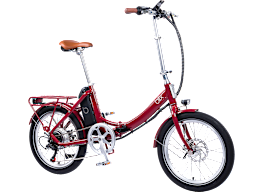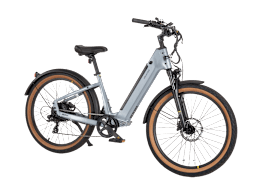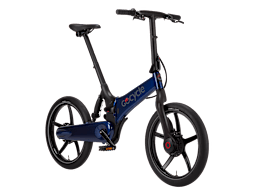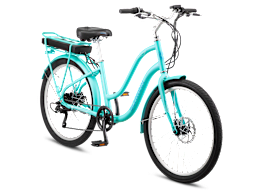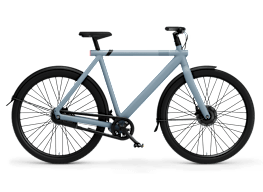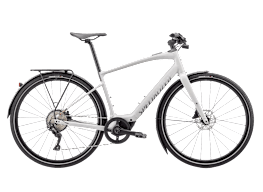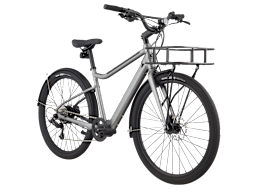Is an Electric Bike Right for You?
What you need to know about choosing an e-bike

Sales of pedal-powered bicycles and electric bikes were on the rise even before the coronavirus pandemic left many consumers spending more time at home, with less need for a car. Since then, bicycles and their electric-motor-powered cousins have been in high demand all over the U.S. as people search for new ways to get around. After surging during the early pandemic, and a slight leveling off in 2021, electric bicycle sales bounded by 269 percent in 2022, according to the NPD Group, a market research company. And no wonder: Electric bikes have great versatility and appeal.
Getting Started
If you’re thinking about buying an electric bike, commonly known as an e-bike, first consider how you intend to use it. There are almost as many types of electric bikes as there are pedal-powered bicycles, and many of them do specific things very well. A big factor in your decision will be where you live, because climate, the presence (or lack) of bike lanes, how far you want to ride on a regular basis, and how your locale classifies and regulates e-bikes will affect how you can use it.
Why Buy an Electric Bike?
There are many reasons people buy an e-bike, but we found after talking to experts and riders that the main ones are for commuting, recreation, and hauling light cargo. Amid the pandemic, health concerns have been another driver of increased bicycle sales. If consumer demand tells the story, bicycles have been a good transportation alternative for urban and suburban commuters wishing to avoid using public transportation. They can also be great for exercise and recreation, even with help from the electric motor.
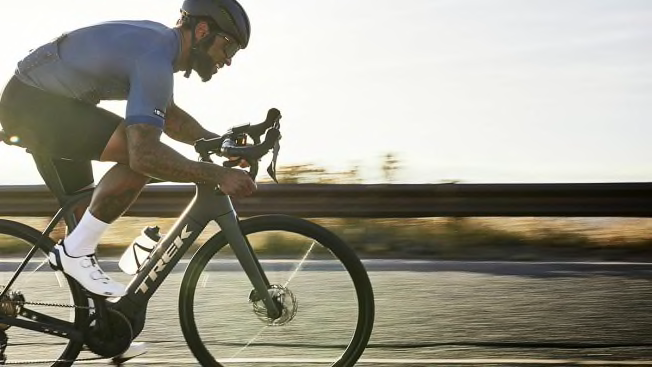
Photo: Trek Photo: Trek
“There’s no one demographic that rides an e-bike,” says Sarah Johnson, a cycling expert and advocate who used to own a bicycle shop in Omaha, Neb., that sold electric bikes. “It’s young people who don’t want a car; it’s older people who want a little help so they can still ride a bike; it’s commuters who don’t want to get all sweaty on the way to work.”
According to the Department of Transportation, nationwide survey data show that more than half of the trips people take are 3 miles or less. And 72 percent of those are made by car; less than 2 percent are made on a bicycle. The National Conference of State Legislatures (NCSL) says that distance is feasible for bicycles, particularly e-bikes.
Electric Bike Pricing
Prices for e-bikes range from less than $500 to thousands of dollars. For most consumers, the higher end of the scale will be about $6,000 to $7,000. According to the NCSL, the average price for an electric commuter bike is $2,000 to $3,000, compared with $1,000 for a conventional midrange commuter bicycle.
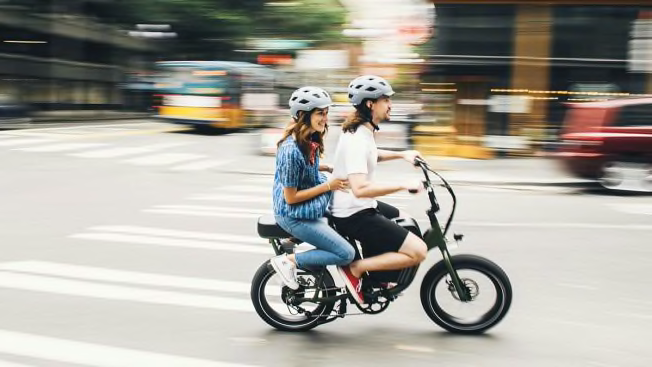
Photo: Rad Power Bikes Photo: Rad Power Bikes
Micah Toll, who digs into the particulars of electric bikes and other battery-powered personal transportation for Electrek, a website focused on everything electric, says budget is an important consideration for e-bike shoppers. He advises consumers to avoid the extreme low end of the electric bike range, where cheaper components can affect the overall quality. He also says first-time buyers might not want to get the most expensive models, to give themselves time to figure out whether or not they like riding one. He says that although there are so many options for every price range as the number and type of e-bike models continue to proliferate, $1,500 is generally a sweet spot in terms of price. You may find cheaper alternatives from no-name manufacturers that pop up on Amazon and other online sales venues, but quality e-bikes tend to start in the $1,000 to $2,000 range.
“There are more players than ever in the industry, and the options have really expanded on both the low and high ends of the market,” Toll says. “Manufacturers are making good-quality bikes but aren’t using top-shelf components. It’s a good balance for people who don’t want to spend a fortune but also don’t want the bike to fall apart after a year or two.”
Commuter Electric Bikes
Commuter bikes come in a variety of styles but are meant to serve as practical transportation. For many consumers, e-bikes represent a much more cost-effective alternative to expensive, fossil-fuel-dependent automobiles, or, at the very least, a way to cut down on the number of cars in the driveway. Many people like the fact that they can commute on an electric bike without getting too sweaty on the way to work, and that they aren’t as likely to get stuck in grinding car traffic.
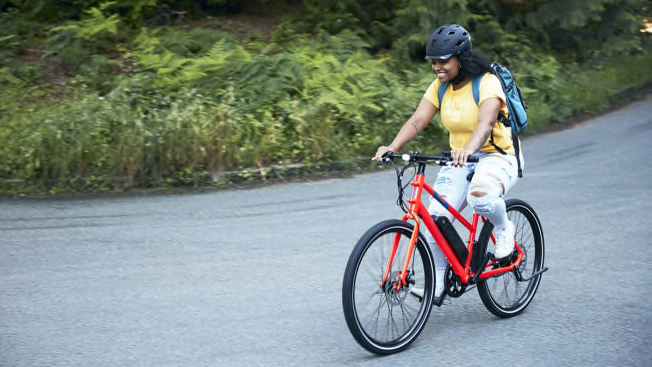
Photo: Rad Power Bikes Photo: Rad Power Bikes
Steve Volkers, who lives in suburban Maryland and commutes several miles over rolling hills, says he actually gets to work a little faster on his electric bike because he doesn’t have to sit in the Washington, D.C., area’s notorious car traffic.
Glen Mayenschein, who works several miles from his home in northern New Jersey, has been commuting exclusively by bicycle for 20 years, and, at age 62, decided to buy an electric bike. “I have a bad knee, so I figured I’d make it easier on myself and get an electric bike,” Mayenschein says, noting that he rides a hilly route to and from work. “I like riding a bike, and I still ride regular ones from time to time, but now I mostly ride the electric one.”
Commuter bikes vary from the type with narrow tires and straight handlebars that city dwellers are used to seeing in conventional form to beefier models with fat tires and thicker frames. Experts say fat-tire bikes—which can be difficult to get going on pedal power alone—are gaining in popularity as electric versions have become more widely available. There are also folding electric bikes that are easier to stow in a tight storage area or aboard a train or bus.
Recreational Electric Bikes
According to NPD, the bulk of the pandemic bicycle sales boom has been for enthusiast bicycles like road and mountain bikes. Road and mountain biking already were popular recreational activities, and the addition of electric motors has expanded their appeal. Multiple studies show that e-bikes, while a less intense form of exercise than conventional bikes, still provide exercise benefits. A study conducted in 2021 and published in Translational Journal concluded that compared with a regular bicycle, riding an e-bike for a simulated 3-mile commute resulted in lower metabolic, cardiovascular, and perceived effort that nevertheless met the intensity level associated with healthy physical activity recommended by the World Health Organization and the American College of Sports Medicine. (The ACSM Medicine recommends at least 150 minutes per week of moderate cardiovascular exercise.)
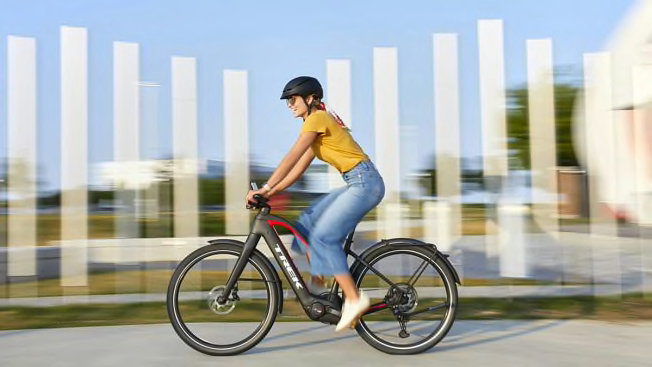
Photo: Trek Bicycle Photo: Trek Bicycle
As with conventional bicycles, there are several types of e-bikes, each with a special purpose, whether it’s riding mountain or forest trails, taking long rides on the open road, or cruising around at a leisurely pace near home. Some conventional cycling purists knock electric bikes because of the greater ease of pedaling, but some converts have told us they love them.
The extra boost from a battery and an electric motor has also opened up cycling to people who might not otherwise have been able to ride. Sarah Johnson, the Omaha cycling advocate, says she faced having to give up cycling when medical problems made it difficult for her to pedal a conventional bicycle.
“I used to be an e-bike hater, but when I realized that it was e-bike or no riding, I realized how great they are,” she says. “I’m feeling better, but I don’t think I’ll ever get rid of my e-bike.”
Performance Road Bikes
The defining characteristics of a road bike are usually a lightweight frame, skinny tires, and drop-down handlebars that help the rider maintain an aerodynamic riding position. It’s not unusual to see a cluster of bright-shirted cyclists pedaling furiously down a bike trail or along the side of the road on lightweight speed machines. Like their pedal-powered counterparts, electric road bikes feature slimmer, lighter components and require an aerodynamic riding position, both meant to increase efficiency over long distances. The assistance offered by an electric motor makes it possible to cover longer distances and handle steep grades with less of the fatigue associated with conventional bicycles.
Even though they’re fast and relatively light, performance bikes still aren’t for everyone, because the aggressive riding position can be uncomfortable for some riders.
Mountain Bikes
With beefier frames, bigger tires, and—sometimes—long-travel suspension components, mountain bikes are built to handle trails, large rocks, logs, and other rough terrain and obstacles. A spin through mountain bike racing videos on the internet reveals that their riders sometimes expect the bikes to handle much more than that—big air jumps and rough terrain, among other demands.
Of course, the fun part is the faster, more effortless downhill portion. Getting there usually involves a demanding pedal up steep grades on loose terrain. Adding an electric motor to a mountain bike makes a lot of sense for someone who wants to experience the thrill of downhill riding but may not have the fitness to handle the grueling uphill slog. The e-bike segment makes bikes with larger tires—which are more difficult to pedal using leg power alone because of the increased weight and rolling resistance that comes with their beefy wheels and tires—more appealing, and also makes it possible to do more riding in a day because of reduced fatigue. Electric mountain bikes aren’t permitted on some trails, so be sure to check state and local regulations. Also, as CR testers found, it’s important to buy an electric mountain bike with brakes that can handle the extra weight of the battery and electric motor.
Hybrids and Cruisers
Hybrids offer a combination of road bike efficiency and the more upright riding position preferred by mountain bikers and commuters. They usually have straight handlebars. This type of bicycle can be a good all-around setup for those who seek the best of both worlds. Cruisers offer a relaxed, comfortable upright seating position, and often a softer ride because of bigger tires and cushier seats. Look for swooping handlebars that keep a rider’s arms a relaxed distance from the body. The addition of an electric motor to either of these configurations makes it possible to use a thicker frame and wider tires to soak up bumps in the road. Volkers, the Maryland commuter, bought this type of e-bike because he can ride it on light off-road trails and paved roads with ease.
Cargo Electric Bikes
Cargo bikes are built to haul cargo and extra passengers. With strong frames, fatter tires, and robust components, they’re the industrial beasts of the two-wheeled world. Pedal-powered cargo bikes have been around for a while. They can be configured with rear-mounted seats or cargo racks, or front-end cargo boxes supported by one or two wheels. Bicycle taxis can also be included in this group; the two-wheeled models are popular for urban delivery and for ferrying children.
The advantages of adding electric power to a platform designed to haul heavy loads seem obvious. Adding more weight to anything makes it more difficult to move around, and electric propulsion can be a game changer for anyone who wants to use a bicycle as an alternative to a car, such as to run errands and carry large loads of groceries, packages, or passengers. E-bikes—although not necessarily the heavy-duty cargo variety—are also popular among urban food delivery riders who want to avoid car traffic and double-parking.
Folding Electric Bikes
Think of the folding bike as a more portable version of the commuter bike. Folding bikes typically have smaller wheels and long handlebar stems and seat posts, as well as hinged frames and other parts that allow the bike to be folded into a more compact shape. This type of bike might be appealing to someone who needs a bicycle but has to pack it into a car’s trunk or take it on a bus or train, or has limited storage space at home. There are a number of electric models on the market, but it’s worth noting that the ones with the most powerful motors tend to be heavier, and therefore more difficult to fold, carry, and stow. That said, CR tested one model that offered a bit of e-assist in a lightweight package that folded very small for easy packing or storage. (See CR’s roundup of the best folding bikes.)
Shopping for an Electric Bike?
See CR’s electric bike ratings and buying guide.
Electric Bike Safety Considerations
E-bikes can travel at speeds similar to conventional bicycles, and they carry the same safety risks. But models that can travel at 20 mph or more add another level of risk to the equation. Higher speeds mean the rider has less time to slow down or stop. Whether riding a bicycle or a motorcycle, the results of even low-speed crashes—especially when cars and trucks are involved—can be painful and even fatal. A 2019 study in the journal Injury Prevention found—based on an examination of emergency room records—that electric bike riders were more likely to suffer internal injuries than those riding conventional bicycles.
The easiest and most obvious way to avoid a serious head injury is to wear a bicycle helmet. A review of bicycle helmet research published in the journal Injury Prevention in 2007 says that wearing a helmet can reduce the chance of serious head injury by 63 to 88 percent. Wearing bright clothing and adhering to traffic laws can also help. Another important safety factor for cycling is the availability of dedicated—and specially protected—bicycle lanes. If you must ride in the road with cars, take into account the prevailing speed and flow of traffic. Motorists may be distracted or driving too fast to see cyclists.
There are aftermarket devices that can be added to any bicycle with features similar to those in the active driver assistance systems (ADAS) found on cars and trucks. They include blind spot warning and crash detection.
There hasn’t been a lot of academic study yet about the injury risks to children posed by the newest electric bikes, but it’s best to exercise extreme caution when addressing the needs of any new or inexperienced cyclists. As anyone who fell off a bicycle when they were young can recall, even low-speed crashes and tip-overs can result in injury.
Because most e-bikes use lithium-ion batteries, there’s also fire risk to consider. It’s important to use the correct charger and charging cord, supplied by the manufacturer that built the bike you own. If you end up having to replace the battery for some reason, only use a UL-listed battery approved by the bike’s manufacturer. Don’t leave the bike unattended while it’s charging, and don’t charge e-bikes in sleeping areas, or where they can block entry or egress to a room or building. Lithium-ion battery fires are rare, but they can be violent. They are often related to improper charging or storage.

















